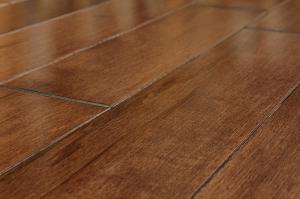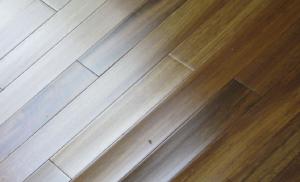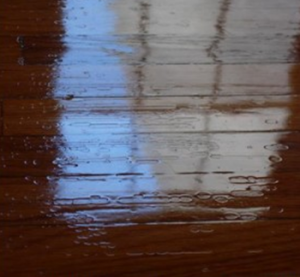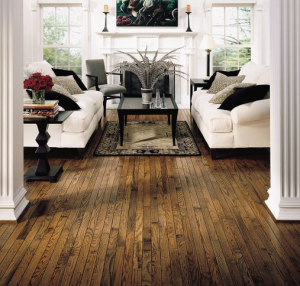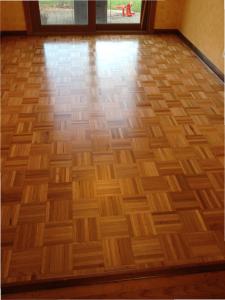Milwaukee Hard Wood Floor Refinishing Educates Home Owners on Sanding previously Finished Floors
Royal Wood Floors continues to educate home owners so that their hard wood floor refinishing gets the best results.
MILWAUKEE, WI, UNITED STATES, February 24, 2017 /EINPresswire.com/ -- Royal Wood Floors specializes in hard wood floor refinishing and installing hard wood floors in the greater Milwaukee area and has been highly successful for over 15 years. “After servicing or installing a new floor, we make a point of providing the following as a special series of tips for every customer in order to ensure that their floors are protected and provide that stunning hard wood beauty for as long as possible”, says Keith Allman who owns Royal Wood Floors. He continues to say, “there are a variety of problems that can affect the beauty and life of hard wood floors and once these are isolated they can be handled properly so that the hard wood lasts for years the way it should”. “We feel that by educating the home owner they can be better equipped to tackle a project themselves or will know what to ask and expect when working with professionals”, he ends.Sanding Previously Finished Floors
As a safety note, it is very important to always wear NIOSH-APPROVED respiratory protection. When applying finish products, always follow the recommendations provided by the finish manufacturer. As a note, which is recommended by the National Wood Flooring Association, when you are sanding a previously finished floor, ascertain whether the floor finish contains lead. Floor finishes applied before 1978 may contain lead. Test kits are available to determine the presence of lead in floor finishes and other architectural coatings. It’s always best to abide by local, state and Federal guidelines for handling and disposal of lead-based products. You should visit the U.S Environmental Protection Agency website at www.epa.gov/lead for more important information.
It is not necessary to fully sand a wood floor to restore the finish unless the floor has visible dents, wear patterns or permanent cupping or you decide you want to change the color of the floor. The screening and re-coat may be sufficient. Cupped floors should not be sanded until the moisture content of the wood flooring and the sub-floor have been stabilized. Cupping occurs across the width of the individual pieces of flooring. The edges are high and the center of each board is lower. This generally happens gradually over time. The cause is a moisture differential within individual pieces of flooring.
Usually it is because of excessive moisture on the underside of the flooring. More subtle cupping can be caused by lack of proper acclimation (this is generally permanent cupping). Potential sources of extensive moisture include building leaks, poor drainage, plumbing leaks or overflows, leaks from dish washers or refrigerators, wet or damp basements or crawl spaces, lack of ventilation, concrete sub-floors that have not cured or HVAC systems not operating correctly or at all.
Solid flooring also may cup when a wood floor experiences conditions that cause rapid drying on the surface. This condition occurs with gaps as the flooring shrinks. Low humidity levels can cause cupping in engineered flooring that is usually referred to as dry cupping.
If the wood floor was factory finished, it is important to first, determine what type of finish was applied. High-abrasion finishes such as aluminum oxide (generally used because of its strength, second to that of a diamond) may be more difficult to sand. High-abrasion finishes may respond better by using a fine grit (80-grit or finer) abrasion in order to remove the surface finish. If the floor was previously site-finished, you will want to use a course-grade abrasive to remove the existing surface finish. Prior to sanding the entire floor, the bevels of beveled-edge flooring should be cleaned to remove finishes, stains and debris. This step should also be repeated after the final sanding and prior to applying the new finish.
Special care should also be given to applying finish on beveled-edge flooring to ensure that the new finish doesn’t “pool up” within the bevels, especially in butt-joints. In addition, make sure that sanding a beveled-edge floor will change the profile of the bevel itself. In the case of a micro-bevel floor it is possible that sanding will remove the bevel altogether. The term ”Micro-bevel” refers to a type of edge available in hardwood flooring which is similar to a beveled edge, but has a shallower “v”-shaped groove than both the beveled edge and the eased edge. It is well suited for helping to hide minor irregularities in the subfloor, such as uneven plank heights. A regular beveled-edge is generally used in non-formal settings and also hides irregularities in the sub-floor.
“The best way to prevent problems is to always do the research first or seek professional help. Then problems such as the ones described here can be prevented,” says Allman.
For more information about this experienced and professional hardwood floor restoration and new installation company, or to schedule repairs by these wood floor refinishing contractors, or learn about custom wood styles or the company’s inlay and medallion installation services, phone Keith Allman at 414-378-2066. Easy estimates and appointments are currently available through the company’s website, http://royalwoodfloor.com/. The company provides top craftsmanship and cares for many types of custom and domestic wood. Visit the company’s website for examples of previous work.
Keith Allman
Royal Wood Floors
414-378-2066
email us here
Legal Disclaimer:
EIN Presswire provides this news content "as is" without warranty of any kind. We do not accept any responsibility or liability for the accuracy, content, images, videos, licenses, completeness, legality, or reliability of the information contained in this article. If you have any complaints or copyright issues related to this article, kindly contact the author above.

